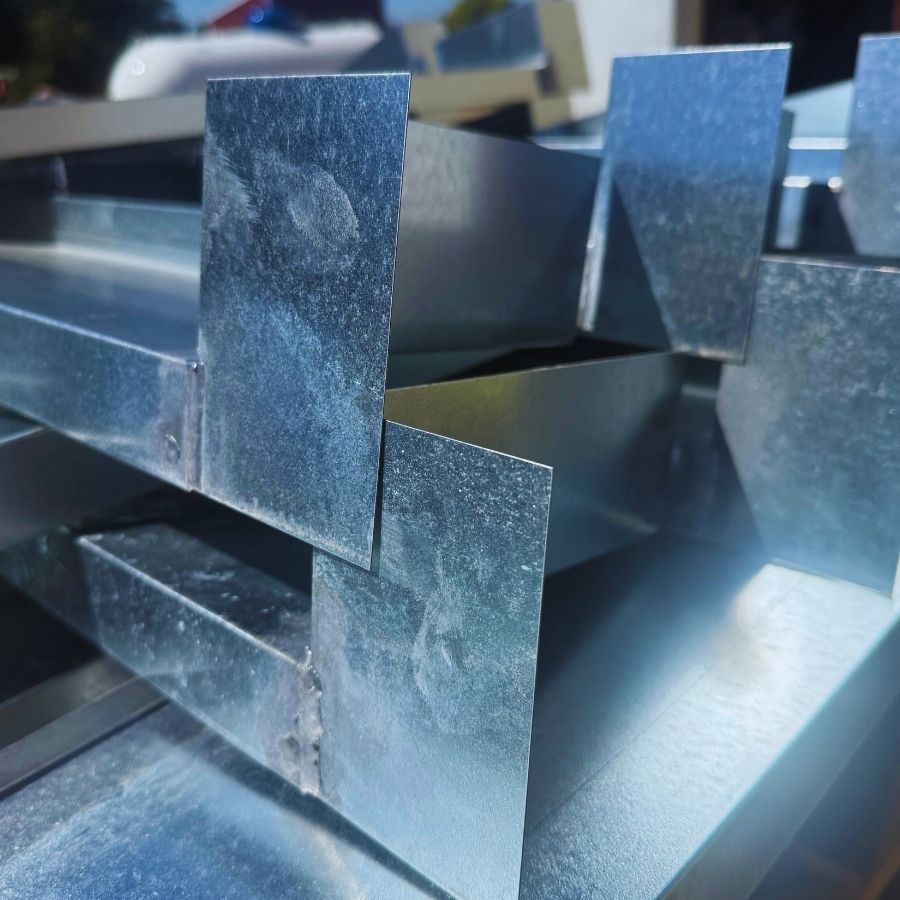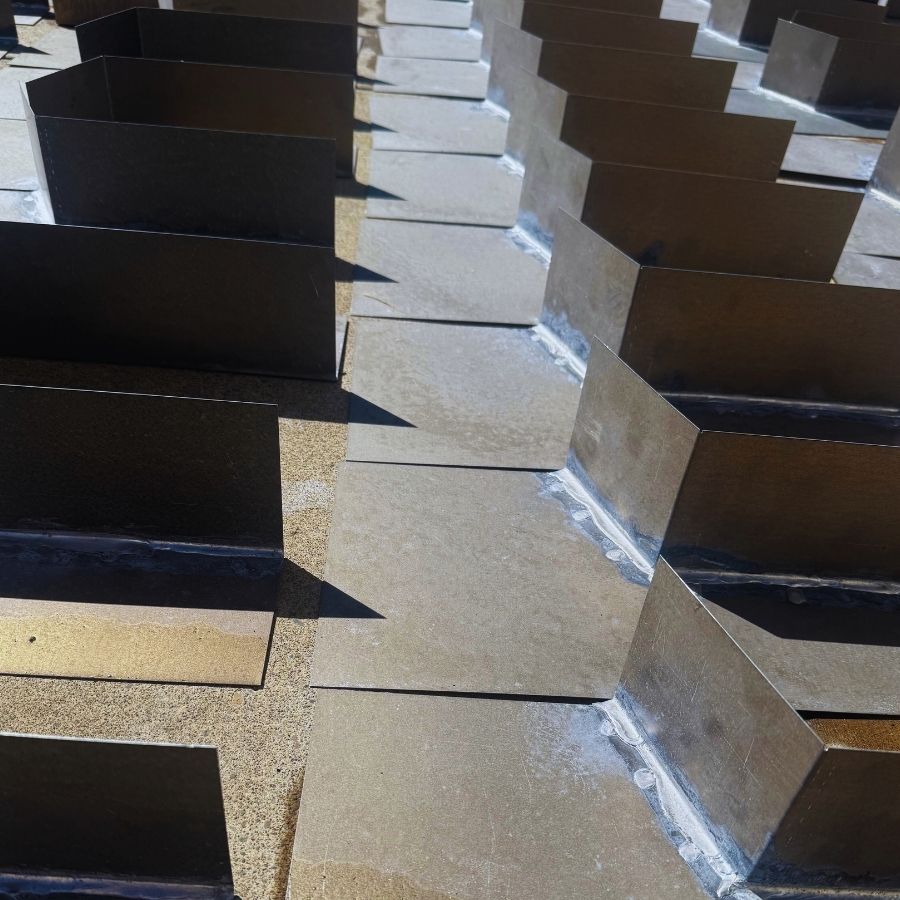
Metal fabrication is the process of transforming metal pieces— such as sheet metal, bar stock, tubes, or structural steel — into finished parts, assemblies or structures through a combination of cutting, bending/forming, welding/joining and finishing operations – all things our team is here to help with! When we talk about custom metal fabrication, we’re referring to a more specialized form of metal fabrication — one where the metal parts or assemblies are designed, engineered and built to specific customer requirements rather than being off-the-shelf components. In essence, it’s fabrication tailored to a client’s unique design, application, material, size or performance needs.

In many industries — from construction to manufacturing, architecture to industrial equipment — a one-size-fits-all metal part simply won’t work. Custom metal fabrication enables a business to specify exactly how a part should function, what material it should be, what shape or finish it should have, and how it integrates with the rest of a system. As one source puts it: “Custom metal fabrication creates metal structures or products according to specific design requirements.” (Archute, 2025)
Benefits of opting for custom fabrication include:
Although every project is unique, most custom metal fabrication jobs follow a set of broadly similar steps:
1. Consultation / Design & Engineering
The fabricator works with the client to understand requirements (loadings, environment, finish, integration, budget) and then converts these into drawings or 3D models (often using CAD software).
2. Material Selection
Based on the design and performance needs, the correct metal type is selected (e.g., carbon steel, stainless steel, aluminum, copper). Other factors such as corrosion resistance, weight, cost, and machinability will also need to be factored in.
3. Cutting / Forming / Shaping
Raw metal is cut (Power Sheared, Band Sawed, Plasma CNC or Hand Snipped), bent or formed (Folding Machines and Specialty Rollers), and sometimes machined to achieve required shapes and tolerances.
4. Joining / Welding / Assembly
The pieces are joined together through various locking machines and techniques (Clinch Lock, Button Lock, ACME Lock, pittsburgh seam, ect.), soldering, riveting or other joining methods, depending on design.
5. Finishing / Inspection
After assembly, finishing touches may include polishing, powder-coating, painting, galvanizing, or applying protective coatings. Also crucial is inspection for dimensional accuracy, weld quality and compliance with standards.
6. Installation / Delivery
Finally, the fabricated part may be shipped to the site for installation or installed on-site by the fabrication team or another contractor.


If your project involves:
In contrast, if your application is simple and standard components will suffice, off-the-shelf may work — but remember the trade-offs in fit, finish and performance.
Custom metal fabrication is what we do here at West Coast Metal Fab. Turning raw metal into precisely engineered, highly tailored parts or structures — built to your unique requirements rather than generic standards. For businesses in Oregon, and specifically around Salem, tapping into local custom metal fabrication shops means you benefit from proximity, specialization and responsiveness. If you have a project that demands something more than standard, custom fabrication is likely the optimal path.
By providing design consultation, material expertise, precision cutting, forming, joining and finishing under one roof, modern fabricators bring your vision to life — ensuring that your metal components fit, perform and last.
If you’d like guidance on how to scope a custom metal fabrication project (e.g., designing drawings, selecting material, budgeting) in Oregon, we are happy to help!

Phone
(458) 253-9427
Address
West Coast Metal Fab
36845 Crackerneck Dr.
Scio, OR 97374